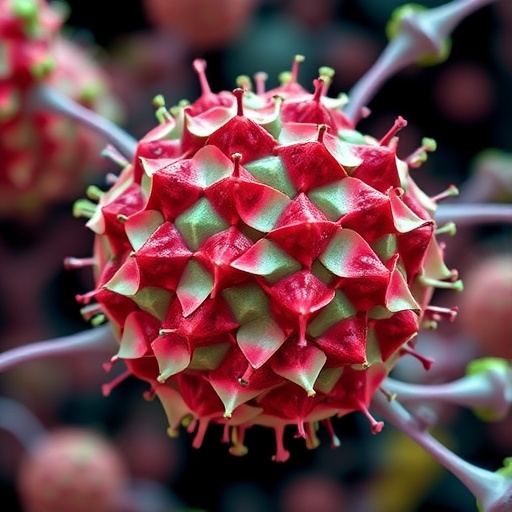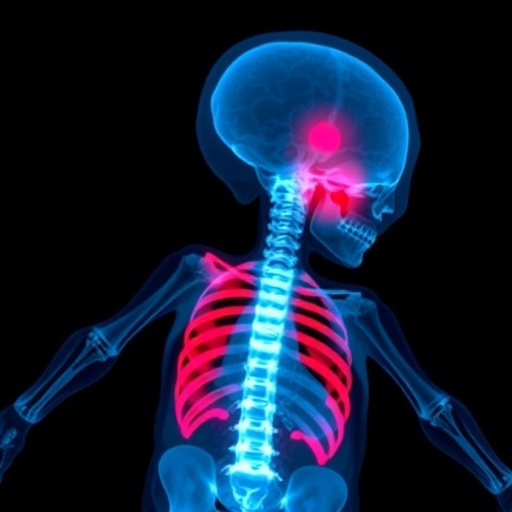The intricate relationship between childbirth and breast cancer outcomes has long been a subject of scientific inquiry, yet new research titled “The parity paradox: does number of children (parity) influence breast cancer mortality across the life course?” published in the 2025 issue of BMC Cancer highlights a surprising, age-dependent twist in this dynamic. This comprehensive cohort study explores how parity—the number of children a woman has—interacts with breast cancer mortality over different life stages, revealing a perplexing pattern that defies simplistic interpretations.
Historically, parity has been considered a protective factor against breast cancer incidence, with numerous studies reporting that pregnancy induces long-lasting changes in breast tissue that reduce cancer risk. However, the question of how parity influences mortality after a breast cancer diagnosis, especially when examined through the lens of age, has remained inadequately addressed. This new investigation bridges this critical gap by analyzing data from nearly 900,000 Israeli women born between 1940 and 1960, followed across three decades to offer unprecedented insight into how reproductive history modifies breast cancer mortality across the lifespan.
Breaking down the age groups into three distinct brackets—30 to 49, 50 to 64, and 65 to 80 years—the researchers employed sophisticated age-stratified Cox regression models, adjusting for potential confounders such as sociodemographic variables and calendar year of cohort entry. These methodological rigor and scale underpin the robustness of the findings, which unveil a counterintuitive and sometimes paradoxical influence of parity on breast cancer mortality risk across the life course.
Among women aged 30 to 49, the study reveals an increased mortality risk for those who have given birth, both among women with one to two children and those with three or more in comparison to their childless counterparts. Specifically, hazard ratios indicating a 55-66% higher breast cancer mortality risk in parous women challenge the conventional wisdom that childbirth universally confers protection. This elevated risk in younger women raises important questions about the biological and hormonal mechanisms that may transiently amplify breast cancer aggressiveness or decrease survival shortly after childbirth.
Interestingly, this parity-associated increase in mortality risk ‘disappears’ in women aged 50 to 64 after controlling for sociodemographic and temporal factors. Mortality hazards for women with one to two children or three or more children align closely with those for nulliparous women within this age group, suggesting a potential mitigation of earlier risks as women age. This neutral association prompts speculation that postmenopausal hormonal shifts and aging-related changes in tumor biology may equalize parity’s impact on breast cancer outcomes in midlife.
The story becomes more complex in the oldest cohort studied, women aged 65 to 80 years. Here, an elevated mortality risk resurfaces—but selectively, confined to women with one to two children, who exhibited a 24% higher risk compared to childless women. Conversely, women with three or more children did not experience any significant mortality difference versus nulliparous peers. This nuanced pattern may reflect differential long-term effects of parity, cumulative hormonal exposure, or interactions with other age-related health factors, underscoring the need for more fine-grained mechanistic inquiry.
Collectively, these findings paint a portrait of breast cancer mortality risk as intricately modulated by the number of children and temporal context, revealing a dynamic interplay rather than a static effect of parity. The “parity paradox” coined by the authors encapsulates the complexity where childbirth both elevates and attenuates risk at different life stages, compelling a reevaluation of reproductive history’s role in breast cancer prognosis.
From a biological perspective, the reasons for this age-specific modulation are manifold. Pregnancy induces profound, sometimes opposing changes in breast cell proliferation, differentiation, and hormone receptor status. Early postpartum years may represent a window of increased vulnerability to aggressive tumors triggered by tissue remodeling or immune suppression. Later in life, parity’s protective imprint may return, possibly through estrogen metabolism alterations or immunologic memory elicited by repeated pregnancies.
Clinically, these insights carry profound implications. Risk prediction models and patient counseling often consider parity as a blanket factor; however, this study argues for age-tailored assessments that incorporate nuanced parity effects. For younger women recently bearing children, intensified surveillance and preventive strategies might be warranted, while older women may benefit from different intervention timing and modalities.
Moreover, epidemiologic research and trial designs must integrate parity’s temporal complexity to avoid masking vital heterogeneity. This study also provokes reflection on social and healthcare disparities intertwined with family size and cancer outcomes. Differential access to screening, treatment adherence, and co-morbidities among women with different parity levels could underpin some observed mortality variations, warranting integrative socio-medical approaches.
The monumental scale and longitudinal scope of this Israeli cohort study offer a compelling model for population-based cancer research, blending demographic data integration with advanced survival analysis. Yet, the findings beckon further mechanistic and prospective studies to validate and extend this paradox—especially investigations dissecting hormonal profiles, tumor characteristics, and genetic susceptibility in parous versus nulliparous cancer patients across ages.
In sum, this study’s revelation that parity’s impact on breast cancer mortality is age-dependent calls for a paradigm shift. Recognizing that childbirth can concurrently predispose younger women to increased risk and modulate outcomes differently later in life, researchers and clinicians must rethink existing risk frameworks. This research advocates for a lifecourse perspective on breast cancer prognostication, one that aligns biological understanding with precision medicine’s promise.
As breast cancer remains the most common malignancy among women worldwide, answering the parity paradox could unlock crucial pathways for tailored screening, survivorship care, and therapeutic interventions. This study’s pioneering approach and striking results are poised to catalyze a surge of multidisciplinary research, potentially translating into actionable guidelines that reflect the complex realities of women’s reproductive and oncologic health over time.
Further elucidation of underlying mechanisms—including epigenetic modifications, immune environment alterations, and endocrine shifts induced by reproductive events—will enrich understanding. Importantly, acknowledging parity’s dualistic influence encourages a more personalized lens in both research and clinical settings, moving beyond one-size-fits-all paradigms towards more refined, temporally aware strategies.
In closing, the parity paradox underscores the intricate tapestry of factors shaping breast cancer mortality, reaffirming that reproductive history is a key but nuanced determinant of outcome. This landmark study equips the scientific and medical communities with critical evidence to refine breast cancer management and heightens awareness of the complex interplay between life events and cancer trajectories.
Subject of Research: The influence of parity (number of childbirths) on breast cancer mortality across different age groups in women.
Article Title: The parity paradox: does number of children (parity) influence breast cancer mortality across the life course?
Article References:
Mizrachi, R.P., Bouhnik, D. The parity paradox: does number of children (parity) influence breast cancer mortality across the life course?.
BMC Cancer 25, 1750 (2025). https://doi.org/10.1186/s12885-025-14993-1
Image Credits: Scienmag.com
DOI: 10.1186/s12885-025-14993-1 (Published 11 November 2025)
Tags: age-dependent breast cancer researchage-stratified analysis in cancer researchbreast cancer incidence factorsbreast cancer outcomes across different life stageschildbirth impact on cancer outcomescohort study on breast cancerIsraeli women breast cancer studylong-term effects of pregnancy on breast tissuemortality rates in breast cancer patientsparity and breast cancer mortalityprotective factors against breast cancerreproductive history and cancer risk





